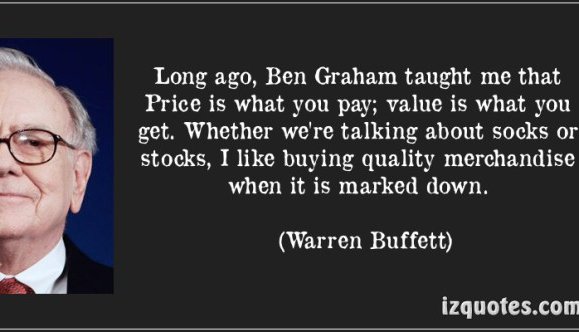Gotham Index "Plus": A Better Way To Invest?
In an article I wrote for our subscribers over the weekend, I noted that toward the end of a bull cycle, “the market” still goes up but many, ultimately giving way to most, stocks do not. That conundrum is explained because it is mostly the large-cap names always in the news (which have already moved up significantly) that see the greatest inflows. This is the phase in which previously skeptical or on-the-sidelines investors see nothing but great reports, earnings beats, and of course Wall Street projections that say that not only is the bull not fading, the next bull cycle is just getting started. This is when the somnambulists finally buy so they don’t feel like they’ve missed the entire party.

Some people have short memories. Not everyone was investing during the ferocious decline at the turn of the millennium. No one investing today, however, likely escaped the 50% decline in the S&P 500 index between October 2007 and March 2009, when index funds were anathema to investors who saw everything they’d made in the previous bull evaporate.
The double-edged sword in buying a typical capitalization-weighted index fund in markets that have already risen significantly is that we are buying a larger and larger percentage of those stocks already up the most. (i.e., those with the highest capitalization will dominate the results of the index.)
So at this point in the market cycle, if one is purposely trying to buy the large caps that have experienced the best momentum, even if they may seem overpriced, a cap-weighted index fund may be the way to go. This assumes of course that you know what you are doing and are nimble enough to get out of Dodge come the Deluge.
Doing so also gives an investor the benefit of the rejiggering of the index with deletions and additions. As of this morning, for instance, the S&P 500 index committee dumped three under-performing companies in favor of three more au courant names: under-performing retailer Urban Outfitters (URBN), rural phone provider Frontier Communications (FTR),and fallen angel First Solar (FSLR) will be replaced by hot chip maker Advanced Micro Devices (AMD), brokerage Raymond James Financial (RJF) and REIT Alexandria Real Estate Equities (ARE). Last month, Incyte Corp (INCY) was added.
Each time this happens the to-be-added companies are bought by all the ETF and mutual fund companies that have to match the index for their own funds. This results in a boost for the newly-added shares and keeps the index moving in a good direction.
As I’ve written before (and recently here) there’s nothing wrong with choosing to buy an index fund as long as we realize (1) it isn’t buy-and-hold; the index components are changed actively, (2) at this stage cap-weighted index funds are becoming more like momentum funds given the increasing concentration in holding the biggest firms, and (3) if one’s goal is to match one asset class – large-cap and large mid-cap firms based in the US.
Personally, I and our clients prefer the flexibility of buying US-based and foreign-based large, mid and small caps, our own allocation to real estate and REITs, smart beta and, as appropriate, un-fixed income offerings as well. The last time I bought a straight index fund was back in 2009 and it served me well. To each his own.

Investing new money right now, there’s no way I’d buy just the S&P. Unless of course someone whose acumen I respect has placed their own unique stamp on the index fund and turned it into a smart beta play, using the S&P 500 index as just a starting point for successful investing.
I recently completed my due diligence on a relatively new index fund that does just that. The Gotham Index Plus Fund (GINDX) combines the passive strategy of buying the stocks in the S&P, thus benefiting from what is more and more a relative momentum trade. But the fund also pursues a smart beta long/short strategy as part of its offering. In this case, the smart beta comes from an obsession with value. The managers look at an investment as if they were going to buy the entire company. This informs their decision to be long, short or look at it again another day.

GINDX is a relatively new mutual fund, offered to the public at the end of March 2015. It’s return since then has been 9.85% annualized, which beats the S&P 500 Total Return Index during a very good period for the S&P. It is managed by value investors Joel Greenblatt, author of The Little Book That Beats the Market, and his partner and Co-Chief investment Officer, Robert Goldstein.
Mssrs. Goldstein and Greenblatt have achieved these results by remaining 100% “net” long – achieving this, however by being 190% long the cheapest large cap US stocks based on their valuation research and 90% short the most expensive large cap US stocks based on their valuation research. This is both an index fund and a long/short fund or, as they prefer to call it and “Index Investment + Active Long/Short Overlay.”
The reason they believe this approach will be better for most investors, unlike the traditional long/short funds that I also own, is that many investors don’t take the time to educate themselves about value investing. So if a long/short fund under-performs for a short period they too often bail out, especially if their favorite benchmark is doing well when their fund isn’t. Someone called it “short-term-it is” and that’s what it is. With GINDX, the portfolio managers know they will stay close to their benchmark in good times (and have beaten it so far since inception) but will be able to protect assets better in bad times (since by the beginning of bad times, it is easy pickings to find expensive overpriced stocks to short.)
Mr. Greenblatt’s books are all variations on a theme: value investing. Sometimes it takes time for value to come to the fore, but it always wins out in the long run. This fund is designed to provide investors with something that may / is designed to / might cushion the downside so they might just stick with it. I have been through so many market cycles and I can tell you that, while you might be one of the 10%, 90% of the people currently singing the praises of passive indexing today will bail out of them when they see their portfolio down month after month and as it goes down 30, 40 or 50%. Better to find a discipline that works or a disciplined fund or funds or a disciplined adaptable advisor. That’s why I am suggesting GINDX for your own due diligence.

In addition to the S&P 500, Gotham Index Plus makes valuation decisions. This leads them to be long companies like Apple (AAPL), Cisco Systems (CSCO – also in our portfolios). Oracle (ORCL), Home Depot (HD), Qualcomm (QCOM), Disney (DIS – which we were recently just stopped out of) CVS and others. They are short firms like Eli Lilly (LLY), Charter (CHTR), Salesforce (CRM), and retailers standing in front of the torrential river known as the Amazon (AMZN).
The full name of this class of fund is the Gotham Index Plus Institutional Class Fund. The “I” in GINDX stands for “Institutional”. A lot of investors might stop right there – after all, this fund “nominally” carries a $250,000 minimum to buy.Don’t let that stop you. Different online brokerages have negotiated contracts that allow individuals to purchase in amounts as low as $5000. And if you use a Registered Investment Advisor, even more will allow purchases in smaller sizes.
Through December 2019 fund expenses are capped at 1.15% per annum. After that, who knows? If they are wildly successful, they may be able to keep expenses that low. Either way, if I have a choice of a fund charging 1.5% but making me a net 10% a year versus one charging me 0.3% but making me 6% a year, it is the 10% versus 6% I care about, not the 1.5% versus the 0.3%. I find myself regularly reminding people that the reported annual returns are net of all fees and expenses. Stated another way, I choose not to be penny wise and pound foolish…
Disclaimer:
(1) Do your due diligence! What’s right for me may not be right for you.
(2) Past performance is no guarantee of future results. Rather an obvious statement, but ...
more


